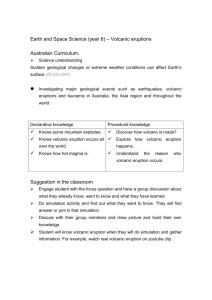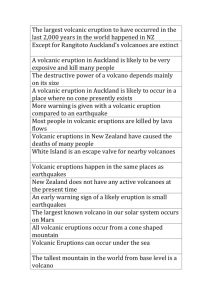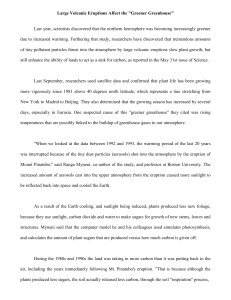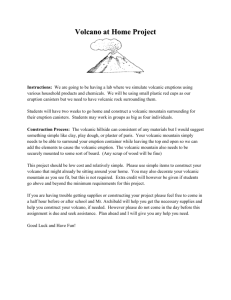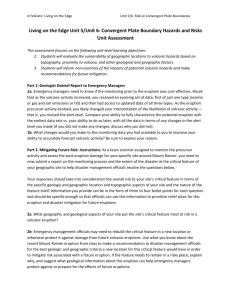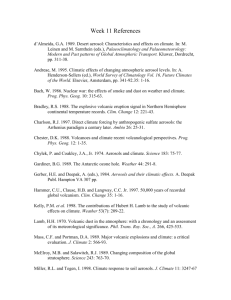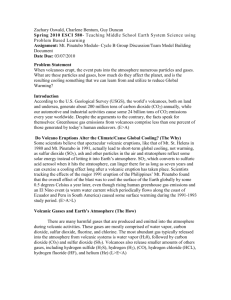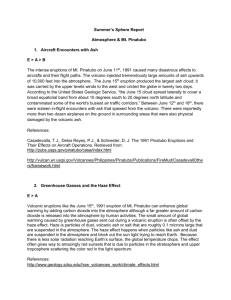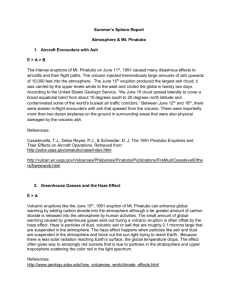ES0906
advertisement
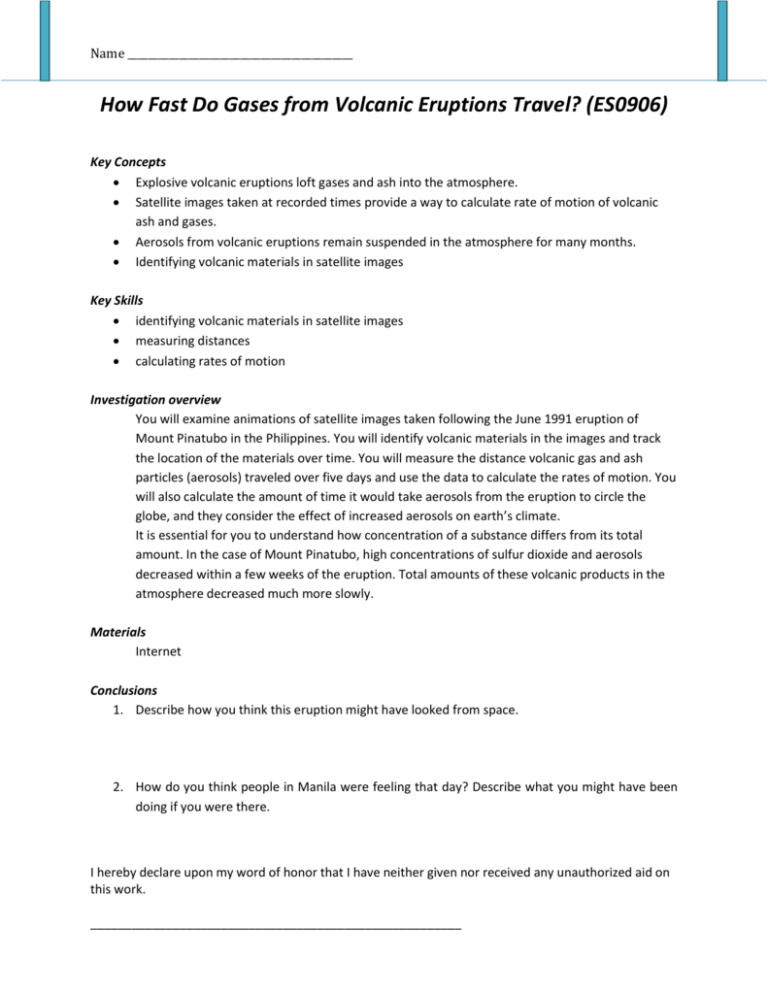
Name ____________________________________________ How Fast Do Gases from Volcanic Eruptions Travel? (ES0906) Key Concepts Explosive volcanic eruptions loft gases and ash into the atmosphere. Satellite images taken at recorded times provide a way to calculate rate of motion of volcanic ash and gases. Aerosols from volcanic eruptions remain suspended in the atmosphere for many months. Identifying volcanic materials in satellite images Key Skills identifying volcanic materials in satellite images measuring distances calculating rates of motion Investigation overview You will examine animations of satellite images taken following the June 1991 eruption of Mount Pinatubo in the Philippines. You will identify volcanic materials in the images and track the location of the materials over time. You will measure the distance volcanic gas and ash particles (aerosols) traveled over five days and use the data to calculate the rates of motion. You will also calculate the amount of time it would take aerosols from the eruption to circle the globe, and they consider the effect of increased aerosols on earth’s climate. It is essential for you to understand how concentration of a substance differs from its total amount. In the case of Mount Pinatubo, high concentrations of sulfur dioxide and aerosols decreased within a few weeks of the eruption. Total amounts of these volcanic products in the atmosphere decreased much more slowly. Materials Internet Conclusions 1. Describe how you think this eruption might have looked from space. 2. How do you think people in Manila were feeling that day? Describe what you might have been doing if you were there. I hereby declare upon my word of honor that I have neither given nor received any unauthorized aid on this work. ______________________________________________________ Name ____________________________________________ 2013 3. What happens to the size of the sulfur dioxide (SO2) cloud over time? 4. What happens to the concentration of SO2 over time? 5. Does the lack of a defined SO2 cloud on June 30 mean that the SO2 was no longer in the atmosphere? Explain your answer. 6. What information would you need to calculate the speed of the sulfur dioxide cloud? 7. Use the distance the sulfur dioxide gas traveled in the time since the eruption to calculate its speed in km/hr. Show your work. 8. How is the movement of the aerosol cloud similar to the sulfur dioxide cloud? How is it different? 9. Calculate the speed of the aerosol cloud in km/hr. Show your work. 10. Earth’s circumference at the equator is approximately 40,000 km. At the speed you calculated, how long would it take aerosols from Mount Pinatubo to circle the globe? 11. What differences do you notice between the two photos? Which photo do you think shows evidence of aerosols in the upper atmosphere? 12. Describe one way you might test the idea that Mount Pinatubo’s eruption was responsible for this instance of global cooling. Explain your answer. 2

